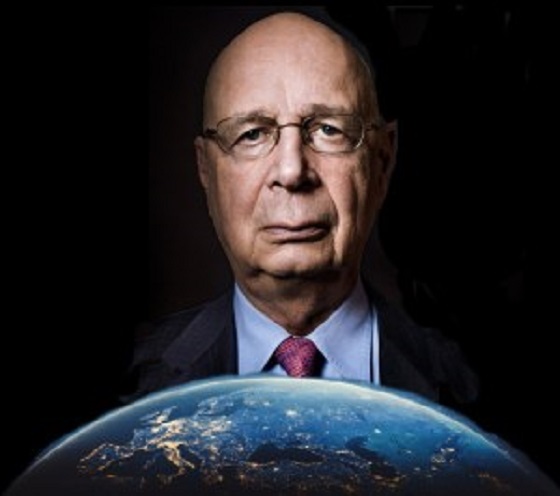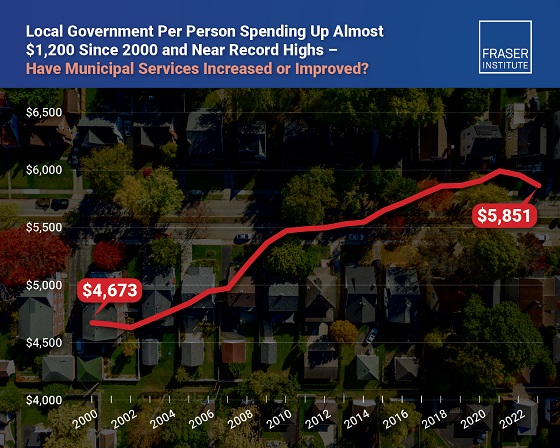Entertainment
Terrific Tunes… Tasty Food… It’s Foodstock!!! Saturday at Elks Lodge

Terrific tunes and tasty fare for a great cause – gearing up for Foodstock
By Mark Weber
A partnership between the Red Deer Food Bank and the Central Music Festival Society continues to not only spread the joy of music but also helps meet a critical need in the community.
Foodstock runs Sept. 14th.
There will be plenty of food, festivities and a ‘mini-international’ music festival at the Elks Lodge featuring the exemplary talents of David Essig, Nine Second Ride, Rob Lamonica, Laurelle, and the mesmerizing magic of Kyle Key.
The fun kicks off at 5 p.m. and runs through to 11 p.m.
As the Society’s web site points out, ‘Thousands are expected to pack the parking lot with donations (for the Food Bank) while feasting on the Red Deer Food Bank BBQ Crue’s sizzling fare.”
At 7 p.m. the music starts inside and runs through to around 11 p.m. All profits go to the Red Deer Food Bank.
Tickets are $30 each in advance or $35 at the door. Kids aged 12 and under are admitted free when with a responsible adult.

“Our goal for this event is to raise over $5,000 for the Red Deer Food Bank to help meet the demand for the holiday season,” said Mike Bradford, president of the Central Music Festival Society.
“We like to create a festive atmosphere,” he explained, pointing out that stilt walkers will be onsite to showcase their skills as well.
“They will also be giving lessons to interested kids on shorter stilts.”
After everyone eats and takes in the fun outside, the tunes kick off in the Elks Lodge.
“If you look around, and you are in a position to help somebody out, the very basic need for all of us is food,” he added. “That’s what it’s all about. “So in my mind, it’s just a way of giving back to the community,” he said. Indeed, it’s a service that is always in high demand as well. “There is no shame in needing a helping hand.”
The partnership at the annual Foodstock event also led to the Food Bank setting up at Central Music Festival Society shows through the year as well. The Society also matches Food Bank financial contributions dollar for dollar, said Bradford.
To date, close to $9,000 has been raised. “It’s something that has worked out pretty well for both of us! If we can help out, we are glad to do it.”
Feedback from all sides has always been fantastic, he added.
- Laurelle
- 9 Second Ride
- David Essig on the 6 string
It’s a rewarding experience for Society volunteers to be a part of and the Food Bank is always very happy for the solid support of course. The musicians are also thrilled to pool their efforts behind such a great community cause as well.
“It’s also about raising the awareness of the Food Bank. Anyone can fall on hard times, and anyone can lend a helping hand.
“We are all human, and we have to get through this life together.”
As for the folks at the Food Bank, they couldn’t be more pleased – or thankful – about this terrific partnership.
“It’s been a tremendous relationship, and it’s been ongoing for a couple of years now,” said Fred Scaife, executive director of the Red Deer Food Bank.
“They invite us to all of their events, too,” he noted, pointing out that Food Bank representatives, as mentioned, are at performances through the year to receive donations from patrons and also make further connections in the community.
“And the shows are always so good!”
But ultimately, Scaife emphasized that it’s partnerships like these that really help to make such a critical difference in the day-to-day operations of the Food Bank.
And with Foodstock, the timing of the event couldn’t be better as food and financial reserves at the Food Bank can be running quite low at that point of the year, said Scaife. “Not only does it give us an opportunity to solicit some donations that we need at that time of year, it also gives us the opportunity to be in front of the public,” he noted.
Scaife also explained that the consistent support of the Central Music Festival Society is what helps with the unpredictable nature of collecting food and funds through the year for the charity.
“It’s such a good, solid relationship. It’s great for us.”
For more info and tickets… www.centralmusicfest.com
Entertainment
Pedro Pascal launches attack on J.K. Rowling over biological sex views

 MxM News
MxM News
Quick Hit:
Pedro Pascal, star of HBO’s The Last of Us, ignited backlash this week after publicly hurling an expletive-laced insult at author J.K. Rowling in response to her support for a landmark UK ruling that upheld the legal definition of sex as biological. Rowling celebrated the decision, which affirms the rights of women to single-sex spaces—a view shared by many who advocate for the safety and integrity of women’s rights. Pascal, a vocal progressive and LGBTQ+ activist, labeled Rowling a “heinous loser,” aligning himself with calls to boycott HBO’s upcoming Harry Potter reboot.
Pedro Pascal calls J.K. Rowling a “heinous loser” after she celebrated the Supreme Court’s ruling regarding trans women’s legal identities. pic.twitter.com/LEGMD79PjQ
— Pop Base (@PopBase) April 24, 2025
Key Details:
-
Pedro Pascal responded on Instagram to Rowling’s post celebrating a UK court ruling that legally defined “sex” as biological.
-
Pascal echoed an activist’s call for a fan-led boycott of the Harry Potter reboot, saying Rowling’s stance was “heinous LOSER behavior.”
-
HBO has downplayed concerns of a boycott, citing the blockbuster success of Hogwarts Legacy despite similar activist campaigns.
Diving Deeper:
The latest clash in the culture war surrounding Harry Potter author J.K. Rowling and the trans activist movement reached a new level of hostility this week when actor Pedro Pascal, a key face of HBO’s entertainment slate, stooped to name-calling on social media. His remarks came in response to Rowling’s defense of the United Kingdom’s recent court decision, which reaffirmed that sex, under British law, means biological sex—a ruling many women’s rights advocates hailed as a long-overdue step toward protecting vulnerable female spaces such as shelters, hospital wards, and sports.
Rowling, whose views on the importance of distinguishing biological sex from gender identity have made her a target of trans activists for years, posted a pointed but unapologetic reaction: “I love it when a plan comes together.” She added, “I get the same royalties whether you read [my books] or burn them. Enjoy your marshmallows!”
In the comments of a post by activist Tariq Ra’ouf—who had attacked Rowling and promoted a boycott of HBO’s Harry Potter reboot—Pascal added his own vulgar commentary: “Awful disgusting SHIT is exactly right. Heinous LOSER behavior.” While Pascal did not explicitly mention Harry Potter, the post he endorsed included calls to tank all future franchise content, including theme parks and merchandise.
Pascal’s involvement with HBO places the network in a difficult position. As the Emmy-nominated co-lead of The Last of Us, one of HBO’s crown jewels, Pascal’s comments are being widely interpreted as an implicit endorsement of the boycott. While HBO has attempted to downplay the activist push, the tension is palpable. Casey Bloys, HBO’s chief content officer, previously noted that the 2023 video game Hogwarts Legacy, which also faced calls for boycotts due to Rowling’s views, still became the year’s top-selling game.
Pascal’s activism is personal as well as political. His sister, Lux Pascal, publicly transitioned in 2021, and he has frequently signaled support for trans activism. At the UK premiere of Marvel’s Thunderbolts, Pascal wore a shirt that read “Protect the Dolls,” a slogan popularized in trans activist circles.
Rather than “heinous,” Rowling’s remarks represent a reasoned defense of biological reality and a pushback against an increasingly aggressive ideology that demands conformity and punishes dissent. Her critics, like Pascal, resort to vulgarity and character attacks instead of engaging with the substance of her argument. But Rowling has stood firm in supporting women’s rights and advocating for clarity in laws that impact everything from sports to safety in single-sex spaces—positions grounded in truth, not hate.
Business
California planning to double film tax credits amid industry decline

From The Center Square
By
California legislators have unveiled a bill to follow through with the governor’s plan of more than doubling the state’s film and TV production tax credits to $750 million.
The state’s own analysis warns it’s likely the refundable production credits generate only 20 to 50 cents of state revenue for every dollar the state spends, and the increase could stoke a “race to the bottom” among the 38 states that now have such programs.
Industry insiders say the state’s high production costs are to blame for much of the exodus, and experts say the cost of housing is responsible for a significant share of the higher costs.
The bill creates a special carve-out for shooting in Los Angeles, where productions would be able to claim refundable credits for 35% of the cost of production.
California Gov. Gavin Newsom announced his proposal last year and highlighted his goal of expanding the program at an industry event last week.
“California is the entertainment capital of the world – and we’re committed to ensuring we stay that way,” said Newsom. “Fashion and film go hand in hand, helping to express characters, capture eras in time and reflect cultural movements.”
With most states now offering production credits, economic analysis suggests these programs now produce state revenue well below the cost of the credits themselves.
“A recent study from the Los Angeles County Economic Development Corporation found that each $1 of Program 2.0 credit results in $1.07 in new state and local government revenue. This finding, however, is significantly overstated due to the study’s use of implausible assumptions,” wrote the state’s analysts in a 2023 report. “Most importantly, the study assumes that no productions receiving tax credits would have filmed here in the absence of the credit.”
“This is out of line with economic research discussed above which suggests tax credits influence location decisions of only a portion of recipients,” continued the state analysis. “Two studies that better reflect this research finding suggest that each $1 of film credit results in $0.20 to $0.50 of state revenues.”
“Parks and Recreation” stars Rob Lowe and Adam Scott recently shared on Lowe’s podcast how costs are so high their show likely would have been shot in Europe instead.
“It’s cheaper to bring 100 American people to Ireland than to walk across the lot at Fox past the sound stages and do it and do it there,” said Lowe.
“Do you think if we shot ‘Parks’ right now, we would be in Budapest?” asked Scott, who now stars in “Severance.”
“100%,” replied Lowe. “All those other places are offering 40% — forty percent — and then on top of that there’s other stuff that they do, and then that’s not even talking about the union stuff. That’s just tax economics of it all.”
“It’s criminal what California and LA have let happen. It’s criminal,” continued Lowe. “Everybody should be fired.”
According to the Public Policy Institute of California, housing is the single largest expense for California households.
“Across the income spectrum, 35–44% of household expenditures go to covering rent, mortgages, utilities and home maintenance,” wrote PPIC.
The cost of housing due to supply constraints now makes it nearly impossible for creatives to get their start in LA, said M. Nolan Gray, legislative director at housing regulatory reform organization California YIMBY.
“Hollywood depends on Los Angeles being the place where anybody can show up, take a big risk, and pursue their dreams, and that only works if you have a lot of affordable apartments,” said Gray to The Center Square. “We’ve built a Los Angeles where you have to be fabulously wealthy to have stable and decent housing, and as a result a lot of folks either are not coming, or those who are coming need to paid quite a bit higher to make it worth it, and it’s destroying one of California’s most important industries.”
“Anybody who arrived in Hollywood before the 2010s, their story is always, ‘Yeah, I showed up in LA, and I lived in a really, really dirt-cheap apartment with like $10 in my pocket.’ That just doesn’t exist anymore,” continued Gray. “Does the Walt Disney of 2025 not take the train from Kansas City to LA? Almost certainly not. If he goes anywhere, he goes to Atlanta.”
-

 Business2 days ago
Business2 days agoOttawa Funded the China Ferry Deal—Then Pretended to Oppose It
-

 COVID-192 days ago
COVID-192 days agoNew Peer-Reviewed Study Affirms COVID Vaccines Reduce Fertility
-

 MAiD2 days ago
MAiD2 days agoCanada’s euthanasia regime is not health care, but a death machine for the unwanted
-

 Alberta2 days ago
Alberta2 days agoThe permanent CO2 storage site at the end of the Alberta Carbon Trunk Line is just getting started
-

 Business2 days ago
Business2 days agoWorld Economic Forum Aims to Repair Relations with Schwab
-

 Alberta2 days ago
Alberta2 days agoAlberta’s government is investing $5 million to help launch the world’s first direct air capture centre at Innisfail
-

 Business2 days ago
Business2 days agoMunicipal government per-person spending in Canada hit near record levels
-

 Business2 days ago
Business2 days agoA new federal bureaucracy will not deliver the affordable housing Canadians need









